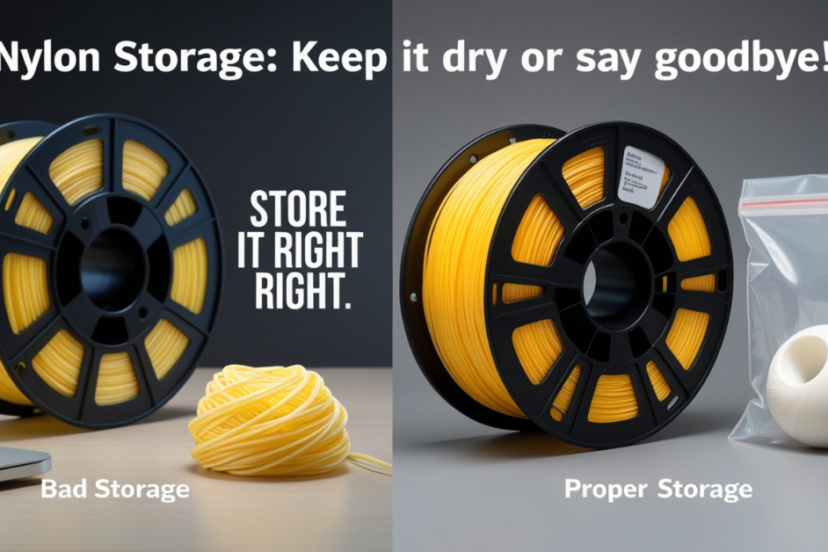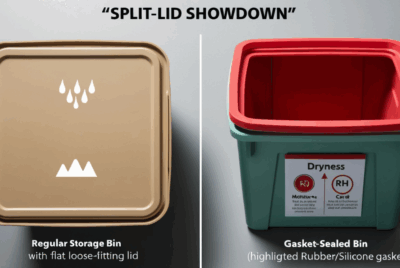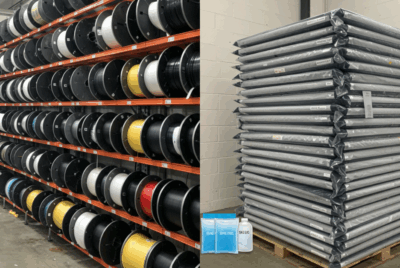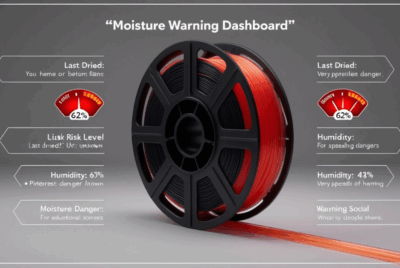What drying method is best for Nylon?
Nylon is a highly hygroscopic material, meaning it absorbs moisture quickly from the air. When Nylon filament absorbs moisture, it can cause printing issues like bubbling, poor adhesion, and weak prints. To dry Nylon effectively, it’s important to use methods that can remove moisture thoroughly. Here are the best drying methods for Nylon:
1. Filament Dryer (Dedicated Dryer)
Best For: Consistent and efficient drying, especially for high-moisture filaments like Nylon.
- How to Do It:
- Place the Nylon spool in a filament dryer and set the temperature to around 70°C to 75°C (158°F to 167°F), which is ideal for drying Nylon.
- Let the dryer run for several hours (usually 4-6 hours), depending on the moisture level.
- Benefits:
- Specifically designed for drying filament, ensuring even heat and moisture removal.
- Adjustable temperature control to suit different filaments, including Nylon.
- Recommended Dryers: Sunlu Filament Dryer, PrintDry Filament Dryer, 3D Fuel Filament Drying Oven.
2. Oven Drying
Best For: DIY drying with common household items.
- How to Do It:
- Preheat your oven to 70°C to 75°C (158°F to 167°F).
- Place the Nylon spool on a baking tray or in an oven-safe container, ensuring it is not in direct contact with the tray to prevent uneven drying.
- Dry the filament for 4-6 hours, checking periodically to ensure the temperature is steady and not too high.
- Benefits:
- Inexpensive and easy to access.
- Works well for drying large amounts of filament if you don’t have a dedicated dryer.
- Caution: Be careful not to exceed 75°C, as excessive heat can cause Nylon to deform or degrade.
3. Food Dehydrator
Best For: Gently drying Nylon without risking damage.
- How to Do It:
- Set the food dehydrator to 70°C (158°F), the optimal temperature for drying Nylon.
- Place the spool inside the dehydrator and let it dry for 4-6 hours.
- Benefits:
- Even air circulation and controlled temperature for consistent drying.
- Can dry multiple spools at once if needed.
- Recommended Dehydrators: Excalibur Food Dehydrator, Nesco Food Dehydrator.
4. Vacuum-Sealed Bags with Desiccants
Best For: Long-term storage and gradual moisture removal.
- How to Do It:
- Place your Nylon spool in a vacuum-sealed bag along with desiccant packets (such as silica gel or clay desiccants) to absorb moisture.
- Vacuum seal the bag and store it in a cool, dry place.
- Benefits:Prevents moisture from entering the filament, maintaining its dryness for long-term storage.
- Works as a preventive method to avoid moisture buildup over time.
- Caution: This is a slower method and might not be effective for drying filament that is already wet.
5. Dry Box with Built-In Heating and Dehumidification
Best For: Continuous drying and storage, especially in high-humidity environments.
- How to Do It:
- Place the Nylon spool in a dry box with built-in heating and dehumidification functions.
- Set the temperature to 70°C to 75°C (158°F to 167°F) for drying.
- The box will dry the filament while maintaining an optimal environment for long-term storage.
- Benefits:
- Provides a controlled environment for both drying and storing Nylon filament.
- Ideal for professional or frequent use where moisture prevention is critical.
Best Method for Nylon:
The Filament Dryer or Oven Drying method is generally the best for drying Nylon, as they both allow precise control over temperature, which is crucial for Nylon’s moisture removal. A filament dryer is the most efficient and user-friendly option, especially if you regularly use Nylon or other moisture-sensitive filaments.
If you don’t have access to a dryer or oven, a Food Dehydrator is a good alternative, offering gentle drying without risking overheating.
Always be mindful of the temperature, as excessive heat can damage the Nylon filament.




